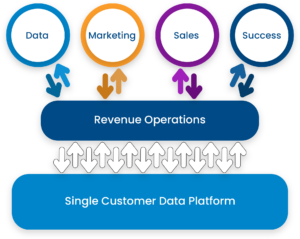Europe Car Forecasts Turn Negative, While Electric Sales Growth To Stall
Electric car sales in Western Europe are set to stall.
getty
Sales prospects for cars and SUVs in Western Europe are fading fast with forecasts dropping into negative territory as economic prospects weaken, and even the rock-solid electric car revolution is likely to take a breather over the next couple of years.
High-profile forecaster LMC Automotive now expects sales in Western Europe to drop 6% in 2022 to just under 10 million, citing supply chain bottlenecks, the war in Ukraine and lockdowns in China because of the re-emergence of the coronavirus.
Western Europe’s battery-electric vehicle (BEV) sales more than doubled in 2020 to just under 750,000 and jumped again in 2021 with sales of 1,143,000 or 10.3% of the market. Schmidt Automotive Research expects this to slow through the next couple of years.
“The consensus view prior to the Russian invasion was a growth rate of between 10 to 15% this year over 2021 (BEV) levels. This is now expected to be halved,” said Matt Schmidt.
In the next couple of years, because European Union (EU) regulations remain constant, manufacturers will be able to concentrate more on selling highly profitable internal combustion engine (ICE) powered cars and SUVs.
“From 2022 to 2024 BEV penetration will increase by just one percentage point due to the main driver and the traditional manufacturers’ key benchmark, (EU) CO2 fleet average targets, remaining constant up to 2025 with little room for manoeuvre with suppliers despite a rising sentiment for EVs,” Schmidt said.
“The semiconductor situation easing at the end of 2022 will lead to a higher volume total market in 2023 (13.8 million), likely suppressing BEV penetration growth as entry-level ICE model availability returns, giving non-plug-ins a boost,” Schmidt said.
At the start of the year, LMC Automotive was confidently predicting sales would bound ahead by a healthy 8.6%. But the unexpected invasion of Ukraine saw a sharp correction to a barely perceptible gain of 0.4% in 2022 to 10.63 million, and now this minus 6% forecast. In 2019’s pre-covid world Western European sales hit 14.29 million.
Western Europe includes all the big markets of Germany, Britain, France, Spain and Italy.
West Europe’s annual selling rate fell to 8.8 million in April from 9.0 million in March, LMC said.
“Our forecast for 2022 has been cut since last month and now sees a year‐on‐year contraction for the West European market. Global supply issues show no significant signs of easing, while underlying demand prospects are eroding too. Consumer confidence in the eurozone has nose-dived in the last two months, now at a level not seen since the initial emergence of the pandemic in 2020, and households will experience a serious squeeze to real income this year. Supply issues do remain the key determinant for registrations for now, however,” LMC said in a report.
Many automotive industry world leaders are in London this week to attend the Financial Times conference called “The Future of the Car”. Volkswagen CEO Herbert Diess, Mercedes CEO Ola Kaellenius, and Renault CEO Luca de Meo are speakers on Monday, likely to be grilled, not so much about the revolutionary new products they plan for the future, but how they will keep their ships steady through this unexpected downturn.








